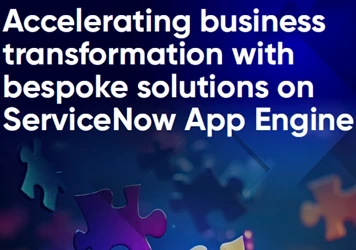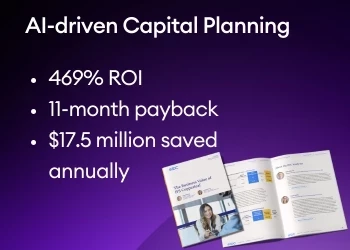Inside Nestlé Health Science’s holistic business transformation
Hillel Lehmann, vice-president for transformation at Nestlé Health Science, explains why the company is transforming everything all at once
Add bookmark
Nestlé Health Science (NHSc) has grown at a rapid pace since its formation 12 years ago and generated more than US$6bn in worldwide sales in 2022 alone. To encourage growth and maximize profitability, NHSc embarked on an enterprise-wide, multi-year transformation in 2019 which aimed to transform every part of the business at the same time. In contrast to many other organizations, NHSc’s top metrics for success were not cost-savings or increased productivity, but employee satisfaction.
 Hillel Lehmann, vice-president of transformation at NHSc, oversees the development and implementation of the company’s business transformation strategy. In this exclusive PEX Network interview, Lehmann explains why NHSc embraced a comprehensive, all-encompassing approach to transformation and why, if you want to measure success, you should look at your employees first. He also delves into why establishing a clear, strategic vision for change is essential for any organization.
Hillel Lehmann, vice-president of transformation at NHSc, oversees the development and implementation of the company’s business transformation strategy. In this exclusive PEX Network interview, Lehmann explains why NHSc embraced a comprehensive, all-encompassing approach to transformation and why, if you want to measure success, you should look at your employees first. He also delves into why establishing a clear, strategic vision for change is essential for any organization.
Join the PEX Network community

Don't miss any news, updates or insider tips from PEX Network by getting them delivered to your inbox. Sign up to our newsletter and join our community of experts.
Learn MorePEX Network: Why did Nestlé Health Science decide to “transform everything all at once” instead of taking a piecemeal approach?
Hillel Lehmann: We went all in on our transformation journey. We realized that if we wanted to take our organization to the next level, the transformation had to touch every facet of the business from HR and finance to customer experience and operating systems, and beyond.
We originally launched individual initiatives at different functional levels but these smaller transformations did not deliver big results. We needed to revolutionize the way we operated as a business. To accelerate change, we created a comprehensive, holistic program that stemmed from the C-suite and engaged every part of the organization.
First, we established a vision at the top, then we built out the infrastructure to support that vision at the organizational level. The undertaking was massive in terms of scope but we de-risked the probability of success by tackling it all at once as one organized program.
PEX Network: How do you measure business transformation success and why?
HL: KPIs are helpful for tracking project progress, but they are not meaningful for tracking transformation. The most important indicator of success is how employees are reacting to the transformation.
Success to us is about whether everyone – from the sales rep in the field and the night-shift worker at the factory, to the finance controller and CEO – understands the vision and feels that they are a part of it. To measure this, we look at employee retention and satisfaction.
Though we still use KPIs such as budgeting, synergy tracking, process improvement timelines and turnaround times, those are secondary to the true metric – our employees.
PEX Network: What are the three biggest mistakes leaders make when establishing a vision for transformation and how can they be avoided?
HL: The number one mistake people make is not understanding the customer and the rationale behind why they need to change. In addition to having a clear strategy in place, you need to build a compelling story around that strategy to ensure it resonates.
Additionally, your strategy needs to be visionary. By this I mean it should be a long-term strategy that encompasses your entire organization and effectively links outcomes to core business objectives. If you do not bridge the gap between the why, the what and the how, successfully implementing your strategy will be challenging.
Finally, you need to make sure you effectively translate your strategic vision into digestible terms that your customers and stakeholders can understand, no matter what strata of the organization they are in.
PEX Network: How do you define “transformational leadership” and how does one develop those skills?
HL: Transformational leadership is about taking your role to the next level and possessing a willingness to push the organization out of its comfort zone. Within my team I stress the notion of productive discomfort, being solutions-oriented and not being satisfaction with the status quo.
We can talk about transformational leadership as this highfalutin notion of something to aspire to, but I think the onus is actually on every leader in the organization to develop these qualities. Otherwise, you are not going to be able to push your part of the organization forward.
To me, transformation and progress should be synonyms, but I am not sure that they are today. Transformation is the only way to strike the right balance between finding synergies and driving growth. Doing one or the other in isolation is easy, but to do both often requires true transformation.
PEX Network: What was your number one takeaway from the OPEX Week 2023 panel discussion you participated in this year?
HL: Data and technology are enablers of transformation and operational excellence but are not the end all and be all in themselves. It was refreshing to hear about strategy instead of data, analytics and tools because those should be secondary.
We have a tremendous amount of data at our fingertips as individuals, consumers and businesses, but few companies use this data effectively. Doing so requires a robust data strategy and clear objectives which many organizations lack.
Many people, even in parts of my own organization, prioritize technology over strategy and that is a mistake. If you start collecting data or implement a new tool without first aligning it to business objectives you are not going to get a lot out of it.
[inlinead-1]
























